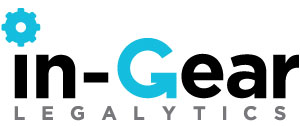
For Corporations
A Moment of Clarity: Powerful Business Intelligence from Limited Data
A large corporate legal department was sitting on years worth of e-billing data from its outside counsel, yet due to inconsistent coding across business units and practice areas it was very difficult to obtain actionable business intelligence and insight on how resources were being deployed. At the time the e-billing and matter management system was implemented, the company had simply used the matter classification taxonomy that the vendor had provided “out-of-the-box” with only minor modifications. Furthermore, when the product was launched, end-users were merely instructed to “complete the forms provided” without being given much guidance on how to resolve ambiguous categorizations. The result was different end-users utilized different fields for different purposes and developed numerous distinct matter taxonomies across the company.
Bill examined the coding for matters in their system and realized that a single matter (e.g. a request for information from a regulator regarding advertising practices) could be potentially categorized in multiple ways depending on the recipient (regulatory, litigation, advertising and marketing, etc.) Applying the Legalytics approach, we designed a novel three-axes system for classifying all matters. This taxonomy ensured that each matter was tagged with information that identified (1) matter origination, (2) substantive legal area, and (3) business unit. In the above example, the matter origination would be “regulatory” because the matter was initiated by regulatory action and the substantive area would be “advertising and marketing”.
In addition to developing this matter taxonomy which now provided both unique and consistent coding for all matters in the company, we also needed to ensure adoption by end-users to ensure consistent coding going forward. We developed a full change management protocol which included steps for leadership alignment, critical messaging, influencer engagement, training and feedback. By coupling the re-configuration of the technology with this change management protocol, we were able to achieve nearly universal adoption of this new system within the first quarter post-launch.
The advantage to this taxonomy was not merely consistent coding across matters across the entire global organization. It was also the business intelligence this 3-axes approach provided. For example, the client could now create a report that looked at the substantive legal areas that each business unit deploys its outside counsel spending toward. If a particular area had a very high (or low) level of spending, it could suggest a need for an additional internal resource (or over-reliance on internal resources). A particular business unit could then further analyze the data trends by origination over time to detect proactively patterns in litigation, regulatory actions, counseling gaps, transaction support, etc. The variety of custom reports that can be created with this three-axes system can meet nearly every business need, and the change management protocol included measures to equip users and stakeholders to appreciate the tool’s capability and deploy it in realtime. Each report offered a different piece of intelligence regarding how the client was leveraging its outside counsel spend and presented insights on how to proactively manage its legal risk.
Our client, by using this taxonomy was able to successfully make the business case for additional headcount in certain substantive areas, restructuring in other areas, and demonstrate the need for investment in shared services platform as a cost-saving measure for the corporation. Overall savings to the client totaled over $1MM without any reduction in service or quality.
